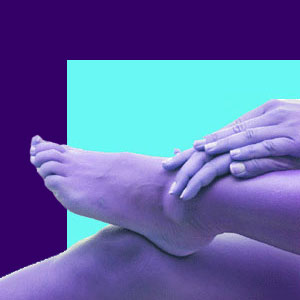
A tingling foot is a very common neurological symptom associated with a wide range of lower back pain conditions. While it is possible for a variety of structural issues to cause tingling in the back, buttocks, leg and/or foot, many chronic tingling conditions can also occur due to simple ongoing ischemia of the affected nerves and soft tissues. This is one symptom that I get occasionally in my left foot, and unlike many others I suffer from daily, this one seems quite psychologically-induced in my own case. To me, the tingling on the bottom of my foot is a barometer of negative emotional activity and internalized stress. However, I certainly have a diversity of structural issues which may be causative, as well.
This dialog details the possible sources of foot tingling, also known as pins and needles.
What is a Tingling Foot?
Tingling is also called pins and needles. It is a feeling that the nerves are not functioning properly and the area may also experience heat, cold, pain, numbness or weakness. Numbness and weakness may be subjective, as perceived feelings, or actual and objective, as demonstrable facts.
Tingling in the foot is generally a mild perceived symptom which can be annoying, but is not too uncomfortable, unless it is also experienced with severe pain or loss of functionality. Most patients have pins and needles on the bottom of the foot, towards the heel, the toes or the middle of the foot. Some have it in the tips of the toes or the top of the foot, as well, or instead. In my case, when this particular symptom acts up, I feel like a tiny animal is running around on the bottom of my foot!
Tingling Feet Causes
Tingling is most commonly associated with a pinched nerve in the lumbar or lumbosacral regions. The most commonly blamed source of the foraminal stenosis is a herniated disc, while spinal osteoarthritic osteophytes come in a close second. While it is possible for some tingling to occur from a partially pinched nerve, continued compression of the nerve has been demonstrated to produce a complete lack of neurological signal. In essence, the nerve will go dead, creating objective weakness and numbness in the affected innervated muscles.
Spinal stenosis can also create tingling almost anywhere in the body and can enact pins and needles in the feet, even when the stenosis condition exists in the cervical spine, making diagnosis truly difficult indeed.
Oxygen deprivation can be enacted by a purely anatomical cause or a psychoemotional source. Psychogenic ischemia is very common and can produce disturbing nerve symptoms almost anywhere in the body.
Tingling Foot Advisory
Tingling alone may not be a cause for alarm, but may be an early warning sign of a more serious condition, such as diabetes or circulatory concerns. Always report new and strange neurological symptoms to your doctor for diagnostic evaluation.
Remember that oxygen deprivation is one of the most logical explanations for chronic idiopathic tingling, weakness and numbness, although this source is rarely diagnosed by doctors. If you suspect that mindbody ischemia may be responsible for your ongoing foot tingling issues, consider knowledge therapy as an alternative path to treatment.
If the condition turns out to be structurally-motivated by nerve root or spinal cord compression, be sure to investigate all treatment options and consider the potential risks and benefits of each before making your choice. For more information on this process, please read our treating back pain section.




